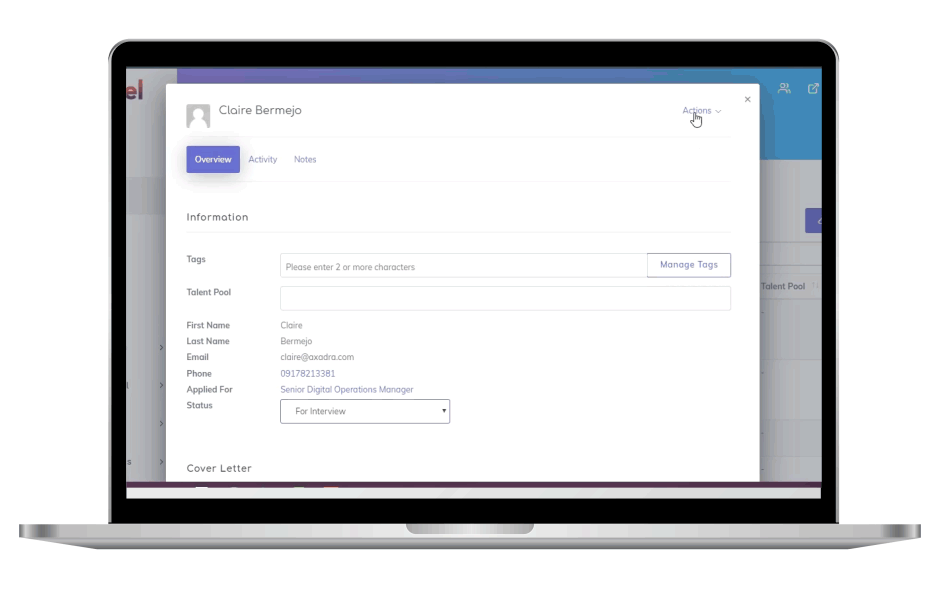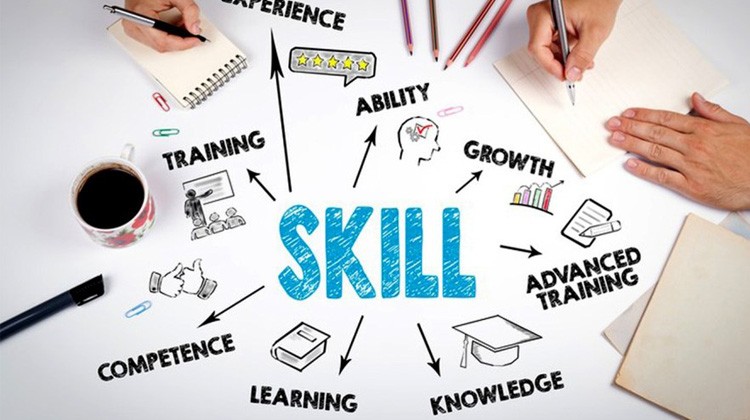Talent acquisition has grown and evolved over the years. As new talents enter the workforce, recruiters should expect to tweak and change their hiring process. Today, one of the most effective ways to hire new talents is through collaborative hiring.
For many recruiters, a collaborative hiring process lessens the operational burden significantly. Experts also claim that it cuts down the cost of hiring a new employee. But how does collaborative hiring work and what can it do for your company?
Learn more about this rising recruitment strategy and improve your hiring practices in this article:
What is Collaborative Hiring?
Collaborative hiring or collaborative recruitment is a hiring method which includes the various structures of your company or organization in the recruitment process. Unlike traditional hiring methods, collaborative hiring strategies are team-based. This means that during the hiring period, close contact between the HR department and relevant departments becomes a necessity.
A collaborative hiring strategy employs a multi-stage approach that allows candidates to meet a wider pool of people within the company. As a result, candidates gain a better understanding of the job description, expectations, and company culture. Collaborative recruitment also benefits the recruiters as it allows the company to assess a candidate under a more comprehensive lens.
Collaborative vs Traditional Hiring
It’s easy to say that a collaborative recruitment process is superior, but it doesn’t explain why old hiring methods have fallen behind. For many hiring managers and HR departments, the question of “Why switch?” is always present. Is collaborative hiring truly better than traditional methods?
To answer this question, we compare collaborative hiring and traditional hiring:
Traditional Hiring |
Collaborative Hiring |
|
|
Inter-departmental Communication |
little to no communication between departments and HR |
clear and constant communication between HR and relevant departments |
|
Candidate Experience |
company-first |
candidate-first |
|
Recruiters |
receives an overwhelming workload due to hierarchical tasks assignments |
delegates assessments and other pertinent tasks to persons-of-interests, allowing for a more fluid hiring workload |
|
Hiring Managers |
controls much of the hiring process, including the acceptance or rejection of a candidate |
facilitates the process, but accounts for the various factors raised during the recruitment period |
|
Interview Process |
limited interviews, usually ranging from key persons such as the hiring manager or direct supervisor |
allows for a clearer and comprehensive understanding of the role, the expectations, and the company culture |
|
Assessment |
decisions are based on one-sided accounts, for both recruiter and recruitee |
decisions are based on multi-faceted accounts from the different relevant departments |
Even with a superb online applicant tracking software, traditional hiring methods fail to account for the ever-growing demand in the workplace. This is where collaborative hiring excels. Modern companies usually employ a collaborative approach to recruitment because of the comprehensive data garnered from the encompassing process.
The Benefits of a Collaborative Hiring Process
From candidate management to communication, collaborative hiring allows a company more freedom and flexibility. If you’re still unsure why you should use this process, then read through some of the immediate benefits of collaborative hiring:
Ensures a manageable workload for the hiring team
One of the biggest challenges in traditional hiring is the workload. With a top-down approach, recruiters often have the short end of the proverbial stick. The sheer number of tasks that they have to do to ensure an optimal hiring experience is nothing short of overwhelming.
With a collaborative hiring process, recruiters can take a breather. With more departments and individuals involved in the hiring process, recruiters don’t need to do every single task. This greatly reduces the stress and pressures on a hiring team while allowing for a more streamlined process.
Increases the chances of hiring a culture fit candidate
If there’s one thing that will determine whether a candidate is hired, it’s how well he fits in the company. While skills and accomplishments are huge factors, culture fit candidates will always have an edge in recruitment. This becomes much easier to gauge in a collaborative hiring process.
Since collaborative hiring allows both candidates and recruiters to have a better understanding of each other, both will have an easier time assessing how well the other reacts to their processes. As more individuals assess a candidate, it becomes easier to see if they match the team and company’s values. Conversely, a candidate will also be able to assess if they match with your organization’s culture.
Improves candidate experience
When it comes to recruitment, one of the most vital things to consider is the importance of candidate experience. The modern workforce doesn’t subscribe to the idea of “company first”. Thriving companies recognize this and prioritize creating a positive candidate experience to attract more talents.
In a traditional hiring process, many of the steps often feel routine and rushed. Candidates feel as though they aren’t assessed fairly, especially if a lack of preparation is apparent. Collaborative hiring takes care of this concern as it allows recruiters to focus on key tasks, ensuring that interviews and assessments used for hiring are optimal and fair.
Enables referrals
Referrals are a great tool and can become a recruiter’s best friend! If you’re going to apply a collaborative strategy to your hiring process, then strengthening your referral program is a must. After all, referrals present a golden opportunity for talents.
Some of the benefits of a great referral program include:
- reduced time for recruitment
- higher employee retention
- increase applicant conversion rates
- find pre-qualified or pre-assessed talents
Increases employee retention
Collaborative hiring strikes a balance between recruiting new talent and retaining your dependable team. In a traditional hiring setup, there’s little to no communication between employees and the hiring manager. This may lead to anxiety or animosity, especially when new recruits start to integrate within the team. However, the nature of collaborative hiring limits such circumstances.
Since more people are involved in collaborative hiring, your current employees will feel more comfortable and valued even with the influx of new recruits. Being engaged and valued in their company boosts morale and encourages your current employees to stay. More importantly, it also allows them to be more proactive in terms of forging further career paths within your company.
Keeps hiring managers updated on current recruitment trends
Nothing hurts your recruitment more than being stuck in the past. If you’re still employing traditional hiring methods, you’re probably losing out on incredible talents. After all, modern workers don’t want to and shouldn’t be in a medieval workplace!
A collaborative hiring strategy provides a modern approach to recruitment. Since you’ll be involving different departments, hiring managers will get a better understanding of what the relevant departments truly need. From current industry standards to better and more accurate assessments, the hiring team becomes updated with current trends and standards.
Limits bias
In a collaborative hiring process, multiple representatives assess a candidate to ensure a fair and unbiased assessment. This easily trumps one of the biggest drawbacks of traditional hiring methods: limited data. With collaborative hiring, hiring managers, recruiters, and interviewers draw from multiple sources and multi-faceted data to ensure that their decisions are optimal.
How to Create a Successful Collaborative Hiring Strategy
Collaborative hiring sounds excellent, but it can be tricky to master. If done incorrectly, even the most modern of workplaces will have a hard time making sense of the hiring process. Much like any change, collaborative hiring requires tweaking and customization for your company.
If you’re considering shifting to a collaborative hiring process or looking for ways to improve your current setup, try out these tips and tricks for an effective recruitment process:
Establish clear guidelines and roles
The biggest challenge in a collaborative hiring process is setting boundaries. Despite the fluidity the setup affords, establishing guidelines and designating roles ensure that there are no unnecessary steps within the recruitment process. During their hiring period, it is important that these lines are not blurred.
The three main roles in a collaborative hiring strategy are the following:
- Hiring managers: In a collaborative hiring setup, the hiring manager is responsible for starting the process. They will be the ones to notify the team that a new position is open and will also provide a clear list of the position requirements. Generally, hiring managers will also be responsible for creating job descriptions and requirements.
- Recruiters: Recruiters manage the end-to-end of the hiring process and will often be the intermediary between the hiring manager and candidate. Their primary responsibility is to ensure that the hiring process is efficient and progressing.
- Interviewers: Interviewers are the other stakeholders in relation to the current position. These may range from direct supervisors or senior team members. Their main responsibility will be assessing the candidate as part of their team, as well as their skills and capabilities.
Streamline the interview process
In a collaborative hiring process, your biggest concern is having excessive interviews. Too many interviews create a huge hassle for both candidates and the hiring team. It also muddles information, especially if the interviews are repetitive and unorganized.
Thankfully, such a problem can be easily eliminated by streamlining your interview process. For each interview, make sure that there’s a point that needs to be answered. If it helps, create standard questions based on the position as well as screening rubrics to ensure interviewers stay on track. Providing training is also necessary, especially for interviewers that have no prior experience.
Elevate Your Recruitment Process with Collaborative Hiring
Collaborative hiring is a unique and interesting set up for many companies. It’s a far cry from traditional hiring methods, which can be refreshing for both candidates and recruiters. If your company is looking for a way to be a competitive recruiter, then a shift to collaborative hiring may just be the key.
With SkillFuel, you can start your shift more easily and efficiently. See our varied services and start upgrading your recruitment game with us today.
















